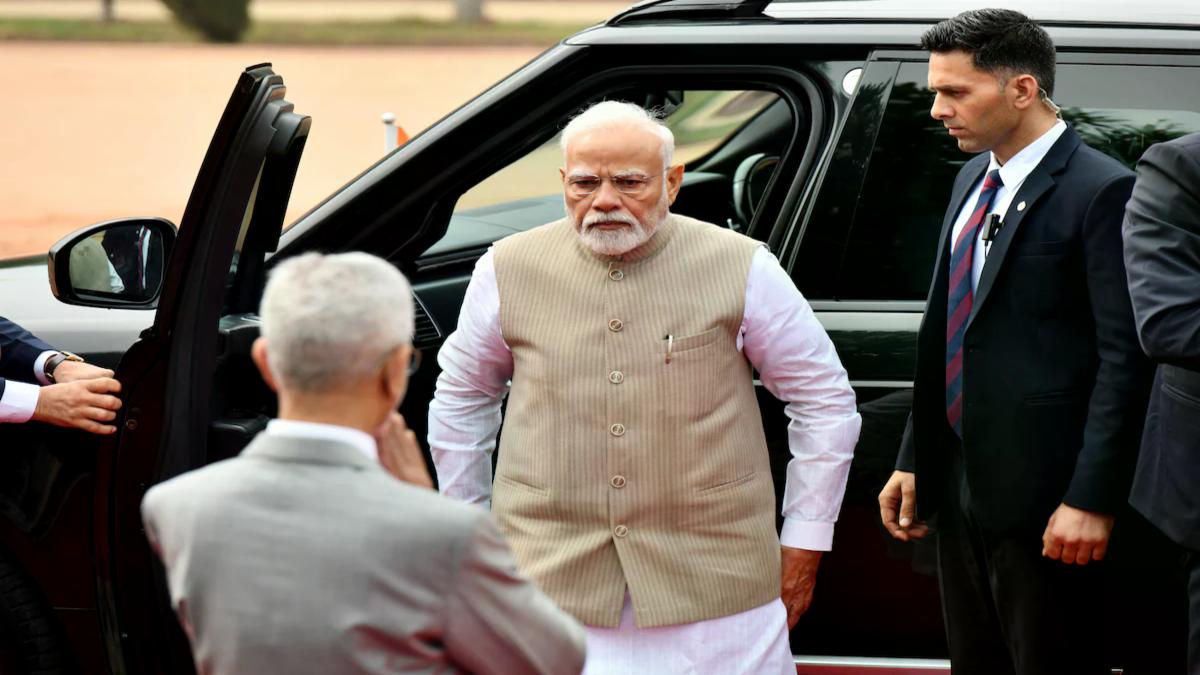Article Body
Kananaskis, Alberta — In a move resonating far beyond diplomatic etiquette, Canadian Prime Minister Mark Carney has formally extended an invitation to Indian Prime Minister Narendra Modi to attend the upcoming G7 Leaders' Summit in Canada, citing India’s expanding economic clout and strategic importance. The invitation, which Modi has accepted, could mark a decisive thaw in India-Canada relations that have been frosty since 2023.
Speaking to reporters from Ottawa on Friday, Carney stressed that “India is not just the fifth-largest economy but also central to global conversations on energy, artificial intelligence, and critical mineral supply chains.” The G7 summit, scheduled to be held later this month in the resort town of Kananaskis, Alberta, will gather the leaders of the world’s most powerful economies, with India’s presence signaling a potential turning point in global power dynamics.
A Diplomatic Pivot: From Frost to Dialogue
The gesture comes against the backdrop of one of the most turbulent diplomatic standoffs in recent history between the two nations. In 2023, the assassination of Hardeep Singh Nijjar, a pro-Khalistan activist in British Columbia, and the subsequent allegations by then-Prime Minister Justin Trudeau alleging Indian state involvement, brought bilateral relations to a standstill. The row escalated into expulsions of diplomats and a media-fueled war of words.
Carney, who succeeded Trudeau after a tight election in late 2024, has taken a distinctly pragmatic approach. “There is a legal process underway in Canada, and it is not appropriate for political commentary to interfere,” he said when questioned about the unresolved Nijjar case. Instead, the new Canadian leadership appears keen to shift the focus toward cooperation and shared strategic interests.
Why India — And Why Now?
Mark Carney’s logic is economic, geopolitical, and forward-looking. As chair of the G7, he emphasized that today's global challenges—be it AI ethics, climate transitions, semiconductor security, or critical mineral diplomacy—cannot be effectively addressed without India at the table.
India, now the world’s fifth-largest economy, has emerged as an irreplaceable node in global supply chains, from lithium to data. With 1.4 billion citizens, a robust digital economy, and a thriving startup ecosystem, India has transformed from a developing participant to a core influencer in global negotiations.
Moreover, New Delhi’s balancing act between the West and the Global South makes it a unique interlocutor. Its participation brings legitimacy and depth to G7 deliberations, many of which have been criticized for lacking inclusivity in a shifting multipolar world.
Modi’s RSVP: Optics and Opportunities
Confirming his attendance via X (formerly Twitter), PM Modi noted:
“As vibrant democracies bound by deep people-to-people ties, India and Canada will work together with renewed vigour, guided by mutual respect and shared interests.”
The language signals not just acceptance of the invite but an openness to mend fences—perhaps even reboot ties marred by a volatile chapter.
Analysts point to Modi’s keen interest in elevating India’s diplomatic standing through high-profile global engagements. After playing a prominent role in the G20 presidency in 2023, India’s presence at G7 could serve to reinforce its credentials as a global rule-shaper rather than a rule-taker.
G7 2025: Who Else is on the Guest List?
In addition to the G7 member states (Canada, USA, UK, Germany, France, Italy, and Japan), Carney’s Canada has extended invitations to a select group of non-G7 nations including:
-
South Africa (President Cyril Ramaphosa)
-
Australia (Prime Minister Anthony Albanese)
-
Ukraine (President Volodymyr Zelensky)
-
Mexico (President Claudia Sheinbaum — decision pending)
This expanded format appears to be part of Carney’s broader vision to transform the G7 from a club of the wealthy to a platform of relevance in today’s complex world.
The Road Ahead: From Symbolism to Substance?
While symbolism matters in diplomacy, it’s the deliverables that will ultimately decide whether this moment marks a real turning point.
Canadian officials have hinted at discussions around:
-
Joint AI governance frameworks
-
Strategic cooperation on rare earth minerals
-
Multilateral mechanisms for pandemic preparedness
-
Indo-Pacific maritime security frameworks
Additionally, a resumption of formal economic negotiations—stalled since 2017—could be on the cards. The India-Canada Comprehensive Economic Partnership Agreement (CEPA) has long been in limbo, but new leadership on both sides could breathe life into it.
Public Reactions: Skepticism and Support
Carney’s invitation has not been universally welcomed in Canada. Critics within opposition parties questioned the wisdom of welcoming a leader linked—however tenuously—to an unresolved criminal investigation. However, business leaders and foreign policy experts largely backed the move, noting that “economic reality must shape foreign policy, not vice versa.”
In India, the reaction has been measured but optimistic. A senior Indian official anonymously remarked, “This could be the beginning of a pragmatic reset—one that leaves the past behind and focuses on shared futures.”
Final Word: G7 as a Geopolitical Weather Vane
As the Kananaskis summit approaches, all eyes will be on the optics and outcomes of Modi’s presence. Will it pave the way for a renewed India-Canada partnership, or simply remain a gesture of convenience? Either way, it underscores one undeniable truth: India is no longer a peripheral player—it is central to the 21st century global order.


Comments